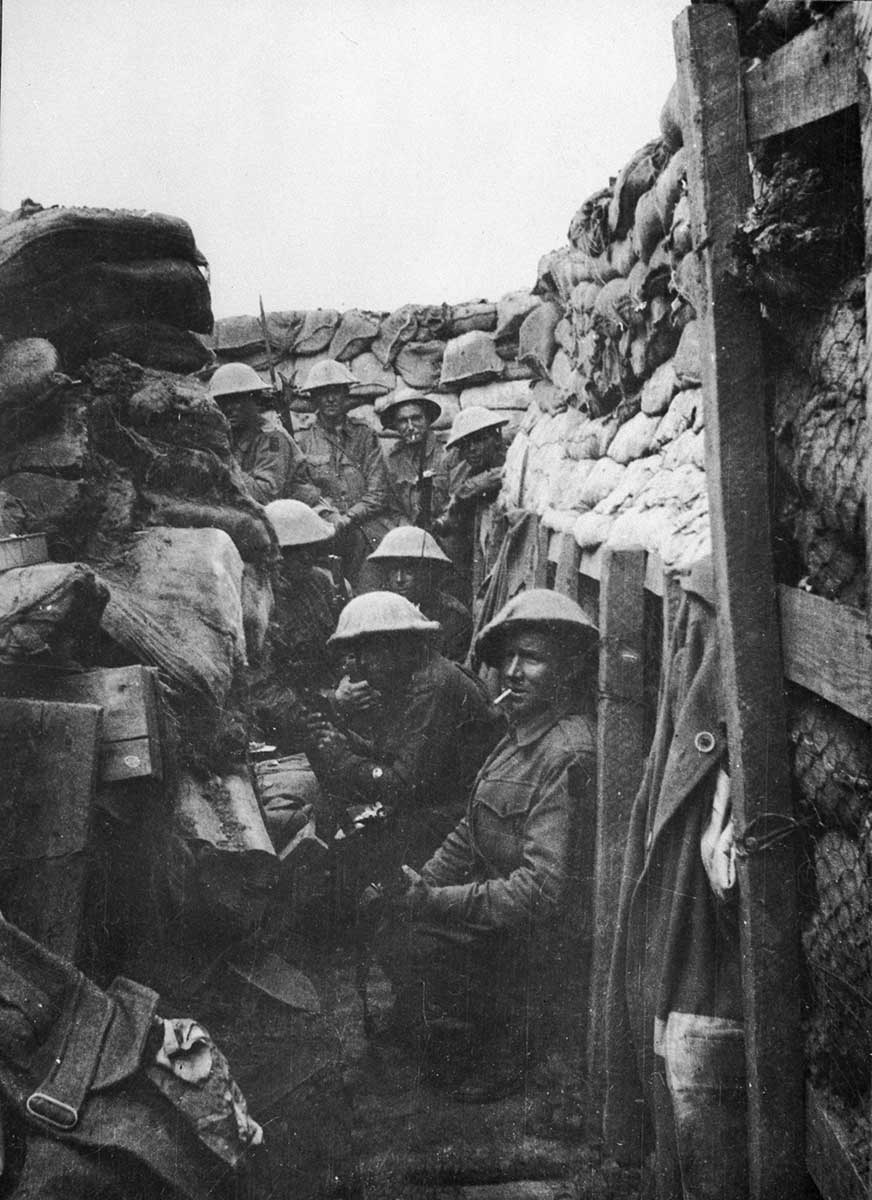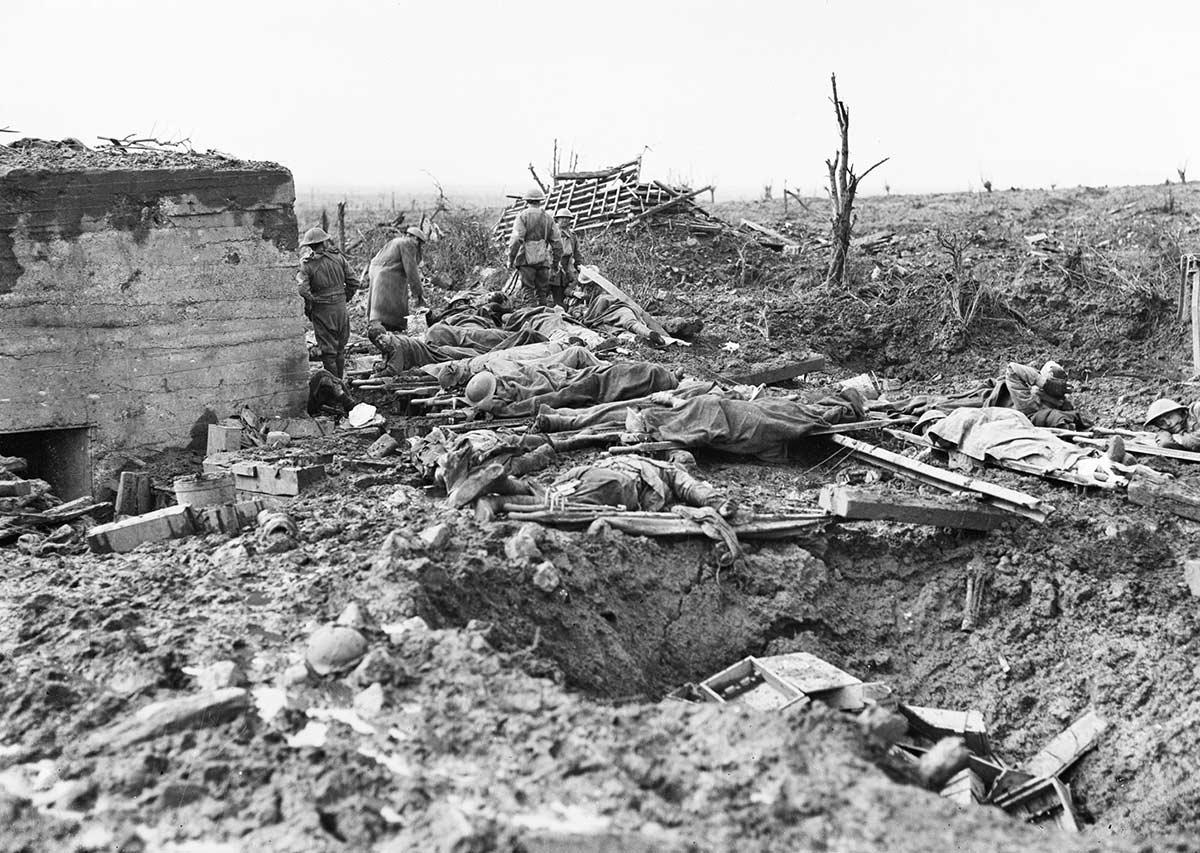Learning module:
War correspondents
War correspondents
16. The world at war

You go to the offices of the Times where you meet Blake Ross. He explains that you have a lot of catching up to do to understand everything that is going on in the war. He suggests a meeting with two professors, one who specialises in facts and timelines, and one who specialises in telling historical narrative. Both have come down from Oxford and they’ve arranged to meet you at Australia House, home of the Australian High Commission in London. The building is adorned with flags and recruitment posters. Professor Offield and Professor Barker meet you at the entrance.
Professor Offield — specialising in facts and timelines
You have a long and intense interview with Professor Offield and this is what you learn...
| Date and event | Discussion | |
|---|---|---|
| 28 June 1914 Franz Ferdinand assassinated | Archduke Franz Ferdinand of Austria and his wife were killed by Serbian nationalist Gavrilo Princip. Ferdinand was heir to the Austria-Hungarian throne. This act led to Austria-Hungary declaring war on Serbia. The entangling alliance system in Europe, militarism, imperialism and nationalism led to an all-out war, the Great War, which would later become known as the First World War. | |
| 28 July 1914 Outbreak of the First World War | The First World War was a global war that began in Europe. After Archduke Ferdinand was murdered, hostilities escalated quickly between the two main alliance systems, the Central Powers (Germany and Austria-Hungary mainly) and the Allied Powers (France, UK, Russia and others). | |
| 6–12 September 1914 First Battle of the Marne | The First Battle of the Marne was fought to the north and east of Paris. It turned back the German advance on the capital of France — a significant victory for the Allies. The battle was followed by stalemate on the Western Front and four years of trench warfare. | |
| 28 April 1915 ANZAC landing at Gallipoli | British Empire forces, including those from Australia and New Zealand, landed at Gallipoli on the Turkish coast in an effort to take the Ottoman Empire out of the First World War. The landing was part of the Gallipoli campaign which was eventually unsuccessful. ANZAC and other British Empire forces retreated in January 1916. | |
| 7 May 1915 Lusitania sunk by German U-boat | RMS Lusitania was a passenger ship sunk by a German submarine in the North Atlantic Ocean. Its sinking turned public opinion against Germany and was one of the many causes of the USA’s entry into the war. | |
| 20 December 1915 Allied withdrawal from Gallipoli | The British High Command realised that the Gallipoli Campaign was unsuccessful, with well over 150,000 dead. | |
| February–December 1916 Battle of Verdun | About 300,000 people died in the Battle of Verdun. It started when German troops attacked the French position. By the end of the battle there was hardly any difference in the position of the front line. | |
| March–June 1916 AIF joins Western Front | In March the Australian Imperial Force were transferred from Egypt to Europe to serve on the Western Front. | |
| July–November 1916 Battle of the Somme | The Battle of the Somme was a major battle between the Allies and Germany, with over 1,000,000 casualties (people killed or injured). | |
| 28 October 1916 First conscription referendum in Australia | Australia had a postal plebiscite to decide if conscription (compulsory military service) would become law. The referendum failed, as did a second one in 1917. | |
| 6 April 1917 USA enters war | After initially trying to stay out of the war, the USA finally joined for several reasons including: public opinion was against Germany, there had been unrestricted submarine attacks in the Atlantic, and Germany wanted to ally with Mexico to help it regain territory. | |
| July–November 1917 Battle of Passchendaele | Also known as the Third Battle of Ypres, the Battle of Passchendaele took place on the Western Front and was fought for control of Ypres in Belgium. There were between 400,000 and 800,000 casualties. | |
| 6–7 November 1917 Bolshevik Revolution | Communist Bolsheviks led by Vladimir Lenin and Leon Trotsky took control of Russia during the Bolshevik Revolution, also known as the October Revolution. An earlier revolution in February had overthrown the monarchy (called Tsars) ruling Russia. But Russia had remained in the war until the Bolsheviks promising ‘Peace, Bread and Land’ were swept into power. | |
| 15 December 1917 Russians exit the war | After the communists took control of Russia they quickly decided to leave the global conflict. They signed the Treaty of Brest-Litovsk the following March with Germany, which resulted in Russia losing a lot of land. | |
| July–August 1918 Second Battle of the Marne | The Second Battle of the Marne was the last major German offensive on the Western Front. The attack failed because of an Allied counterattack by French and American forces. 270,000 casualties. | |
| 11 November 1918 Armistice — end of the war | The armistice treaty was signed between the Allies and Germany just outside of Paris. It represented Germany’s total surrender. | |
| 28 June 1919 Treaty of Versailles | The Treaty of Versailles ended the First World War. It imposed harsh penalties on Germany and said Germany was responsible for the war. | |
That was an intense amount of information. Your next meeting better be a bit less dense with facts!
Professor Barker — specialising in telling historical narratives
Your second meeting of the day goes well. This is what you learn...
After the assassination, when all the major powers had set their armies in motion, Germany had a problem. France had built a line of forts along the French/German border to the west — the Western Front. Meanwhile the Russians made advances against Germany’s ally, Austria-Hungary, in the east, and Germany had to send reinforcements to help. Germany planned on knocking France out of the war quickly so that it could concentrate on the huge Russian army to the east. The German army simply went around the forts and through Belgium to get into France. But there was fierce resistance from the Belgians, which slowed down their advance.
Germany made some slow progress on the Western Front, but the bloody Battle of the Marne quickly put a stop to that and Germany retreated. The Western Front ended up being basically a stalemate for years. The war then became about wearing the opponent down, rather than quick victories.
The Entente powers started to try and find ways to break the deadlock. They took away Germany’s overseas territories. They added new allies, Italy and Japan. On the other side the Central Powers got the Ottoman Empire to side with them. In reality none of this made much difference.
Soon both sides were using poison gas in the trenches, killing civilians in air raids and using submarines to destroy civilian ships. The huge British and German naval forces, one of the reasons for the tensions leading to the war, only fought one major battle. The enormous ‘dreadnoughts’ (the biggest boats ever built up to that time) were damaged in a huge naval battle – the Battle of Jutland – but both sides retreated and there was no real winner.
There were huge losses of soldiers at the battles of Verdun and the Somme, but still the war rolled on.
There was a revolution in Russia. Communists took over and took Russia out of the war. Then the USA joined the war. Everyone knew this meant that Germany would eventually lose. Germany tried one last attack, using their final resources doing so. The attack was repelled. Germany was losing on all fronts and so surrendered unconditionally in November 1918.
The war exhausted armies but it also took its toll on civilians. In addition to the civilian casualties, entire societies were mobilised for the war effort, food was strictly rationed, civil liberties severely restricted and the economies of the major European powers consumed by the war. This was ‘total war’ on a scale never seen before.
Your task
What a full-on day! Mr Callister has sent word that he wants you to develop your journalism skills further. Rather than just reporting, he wants you to write articles that dig deeper — articles that use historical concepts in them.
He has kindly telegraphed a list of concepts that you might want to use in your writing:
Historical thinking concepts:
- ethical judgement: deciding whether the treatment or behaviour of others is fair
- historical perspective: considering the world views of people from the past
- cause and consequence: looking at what causes historical events and the effects of historical events
- continuity and change: asking what has changed and what has stayed the same over time
- evidence and interpretation: looking at sources and using them to understand history
- historical significance: thinking about what is important from the past.
Concepts found in history:
- atheism: not believing in God or other supernatural beings
- cause: something or someone that makes something happen or exist
- change: when something is made different over time — the opposite of continuity
- civilisation: an advanced state of human social organisation, typically including writing, cities and a government
- contact: interaction between different societies, civilisations or countries
- continuity: things which remain relatively unchanged from one time period to another
- culture: the ideas, customs and social behaviour of a group of people
- effect: a change which is the result of an action or cause
- empathy: the ability to understand and share other people’s feelings
- evidence: information used to show that something is true
- nature: the physical environment, including plants, animals and landscapes — separate from humans and their creations
- perspectives: different ways of thinking about and understanding something
- significance: importance
- society: people living together in organised communities
- technology: a machine, piece of equipment or method that is created to solve problems
- trade: buying and selling goods and services
From the list of concepts above, pick which is the most relevant to the information listed, with a brief statement saying why. Hints have been provided for the first two to get you started.
| Relevant concept (there could be more than one) | ||
|---|---|---|
| Ranking the top five battles of the war (Hint) | ||
| Military technology in the war (Hint) | ||
| A photo of a mother waving goodbye to her son, who has volunteered to fight | ||
| A poem written by a war poet | ||
| A photo of a scene of destruction in ‘no man’s land’ | ||
| When Britain sent lots of military equipment to Russia, but demanded payment later | ||
| How a soldier at the front felt, and how his wife back home felt, about him being away | ||
| A photo of a soldier dying on the battlefront | ||
| A diagram of what a soldier in the war had for equipment, alongside a diagram of a modern Australian soldier | ||
You slump into bed after what has definitely been your most full-on day as a journalist. Your brain is buzzing. You need rest. You take the next day off and go to the telegraph office to see what your editors want from you next. Go to 17.







